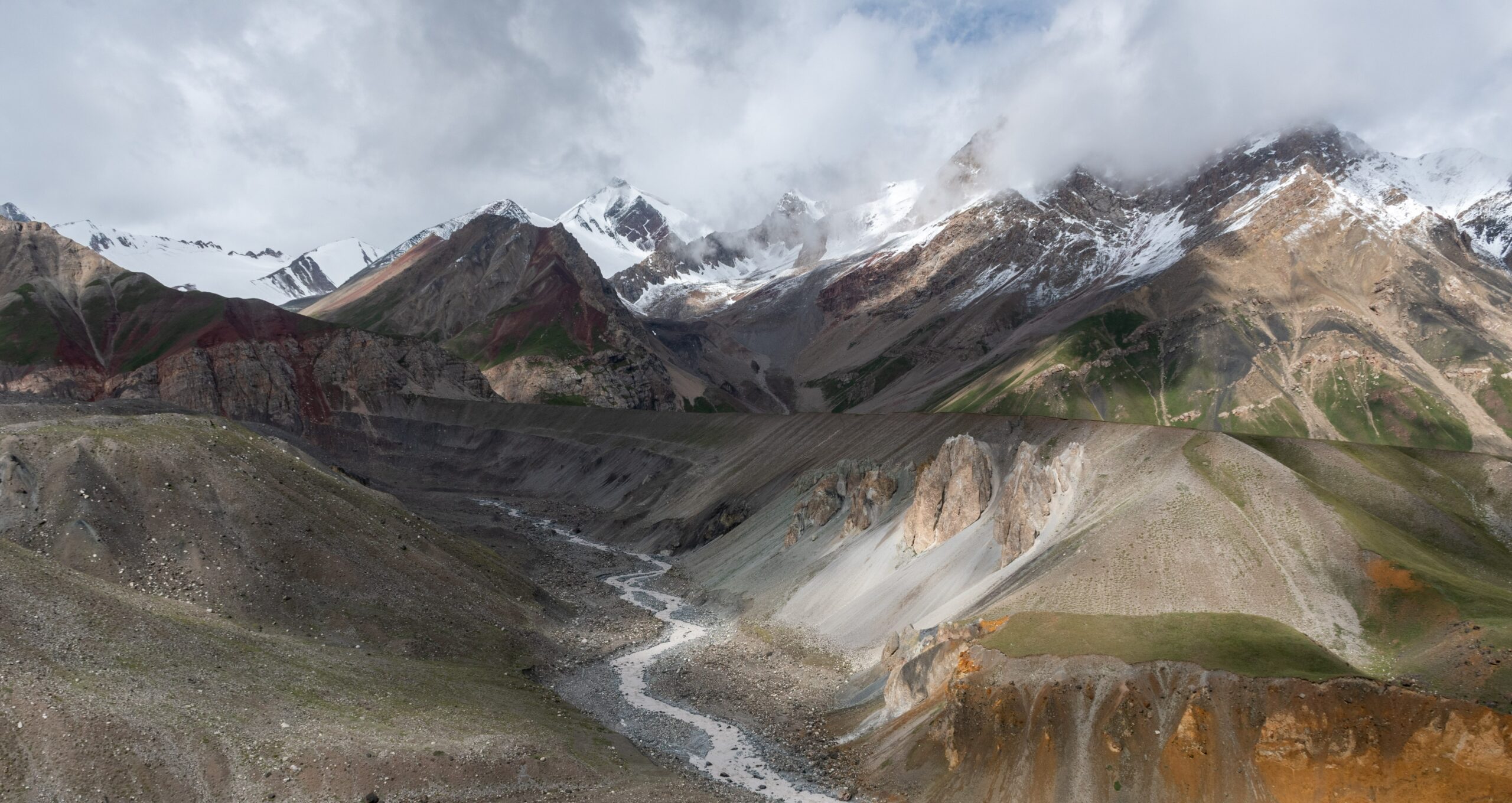The Pamir Mountains are the main source of runoff for the Amu Darya, a highly arid basin where water management is challenged by the limited resources. River runoff is controlled by the seasonality and evolution of the Pamir mountain cryosphere: two-thirds come from snowmelt, while glaciers sustain discharge in dry seasons and years. However, the current and future state of the cryosphere remains highly uncertain due to a lack of contemporary measurements. Furthermore, the region is highly varied, exhibiting a spectrum of climates and glacier sensitivities. Precipitation is highest in the northwest, where small cirque glaciers are generally losing mass, whereas the colder and drier East has more stable glaciers, but in the Central Pamirs large glaciers exist in variable health, with some additionally surging or collapsing catastrophically. The existence of balanced-budget glaciers, an extension of the Karakoram Anomaly, is particularly perplexing and direct measurements are needed to evaluate the possible causes.
This cluster will leverage established measurement approaches along with emergent techniques to deliver a comprehensive picture of seasonal snow and glacier mass fluctuations, and to determine their influence on alpine water budgets. We will collect novel measurements addressing three main objectives:
1. To constrain seasonal glacier and snow mass balance regionally.
2. To determine decadal accumulation patterns over glaciers.
3. To develop nascent glacier monitoring efforts into a gold-standard measurement network.
Specifically, we will measure seasonal snow depth and glacier mass balance over a large domain with unprecedented accuracy, characterise the spatial patterns of ice stratigraphy in the accumulation area using Ground Penetrating Radar (GPR), collect firn cores to measure firn density and stratigraphy, and provide the first ice thickness measurements for many of the region’s glaciers using separate GPR surveys (with the Cryospheric Hazards Cluster). We will additionally add instruments to reestablished glacier and catchment monitoring sites to provide a unique high-altitude catchment monitoring network in the Third Pole. Combining these distinct field measurements will enable us to bridge temporal and spatial scales to understand the current and recent history of glaciers, snow, and hydrology to an unprecedented level.
Cluster Participants
Francesca Pellicciotti, Professor, ISTA. Cluster PI.
Martin Hoelzle, Professor, UniFr. Local glacier monitoring, coordination with Permafrost cluster.
Christian Hauck, Professor, UniFr. H-F GPR expert, integration with Cryospheric Hazards Cluster.
Michael Zemp, Professor and Director WGMS, UZH. Real-time monitoring of glaciers.
Daniel Farinotti, Professor, ETH-Zurich. Low-frequency GPR survey implementation (ETHAIR).
Devis Tuia, Associate Professor, EPFL. Remote sensing, machine learning for field data analysis.
Joel Fiddes, Senior scientist, SLF. FODAR snow surveys and assimilation into regional models.
Tomas Saks, Senior scientist, UniFr. Expert in glaciology in Central Asia, will advise the core team.
Evan S. Miles, Senior Scientist, UniZ. Firn cores, high-frequency GPR survey, cluster coordination.
Eric Pohl, Postdoc, Uni Fribourg. Implementation of proglacial stream monitoring.
Thomas Shaw, Postdoc, WSL. Climatic controls analysis, snow measurements, moisture tracking.
Marin Kneib, PhD candidate, WSL. Firn-coring, analysis of supraglacial melt patterns.
Stefan Fugger, PhD candidate, ISTA. Hydrological observations, firn-coring, catchment modelling.
Achille Jouberton, PhD candidate, ISTA. Snow measurements, smart stakes, catchment modeling.
Haruki Hagiwara, PhD student, ISTA.
Enrico Mattea, PhD candidate, UniFr. Glacier dynamics.
Heini Wernli, Professor, ETH.
Reto Knutti, Professor, ETH.
Vicente Melo, PhD student, ISTA.
Local Partners
Abdulhamid Kayumov, Professor and Director, CGR-TAS, Tajikistan. Pamir glacier expert, logistics, permitting, inteface with local stakeholders.
Bolot Moldobekov, Professor and Director, CAIAG, Kyrgyzstan. Glacier expert, logistical support.
Murataly Duishunakonov, Professor, KNU, Kyrgyzstan. Glacier expert and local logistical support.
Muzaffar Shodmonov, Tajikgidromet, Tajikistan. Agency partner for snow surveys. • Tohir Sabzaliev, Head of AKAH SDI Unit, Tajikistan. Logistical support, interface with local stakeholders, coordination of permafrost and hazard related activities.
Khusrav Kabutov, PhD candidate, CGR-TAS, Tajikistan. Mass balance measurements.
Hofiz Navruzshoev, PhD candidate, CGR-TAS, Tajikistan. Mass balance measurements.
Ardamehr Halimov, Research Assistant, CGR-TAS, Tajikistan. Hydrological observations.
Farux Anvarov, PhD candidate,CGR-TAS, Tajikistan. Field logistics.
Firdavs Vosidov, Research Assistant, CGR-TAS, Tajikistan. Field logistics.
International partners
Walter Immerzeel, Professor, UU, Netherlands. Climate modelling.
Tobias Bolch, Senior scientist, St Andrews University, UK. Geodetic mass balance analyses.
Martina Barandun, Senior scientist, EURAC, Italy. Glaciological mass balance modelling.
Patrick Wagnon, Senior scientist, IRD, France. Establishment of new glacier monitoring activities.
Fanny Brun, Senior scientist, IRD, France. Regional glacier mass balance analyses.
Amaury Dehecq, Senior scientist, IRD, France. Regional glacier dynamics analyses.
Christoph Mayer, Senior scientist, BADW, Germany. Glacier accumulation analyses.
Astrid Lambrecht, Senior scientist, BADW, Germany. Analyses of Fedchenko Glacier.
Ruzica Dadic, Senior scientist, ARC, New Zealand. Snow measurements, snow modeling.
Ivan Lavrentiev, Senior Scientist, Russian Academy of Sciences.
Dean Wilson Gelling, Early career scientist, Columbia University, US.
Dilara Kim, MSc student, University of Würzburg, Germany.
Pascal Wyss, Msc student, UniZ.
Franco Salerno, Professor, Italian CNR.
Nicolas Guyennon, Postdoc, Italian CNR.
Nicola Colombo, Postdoc, Italian CNR.
